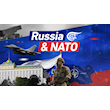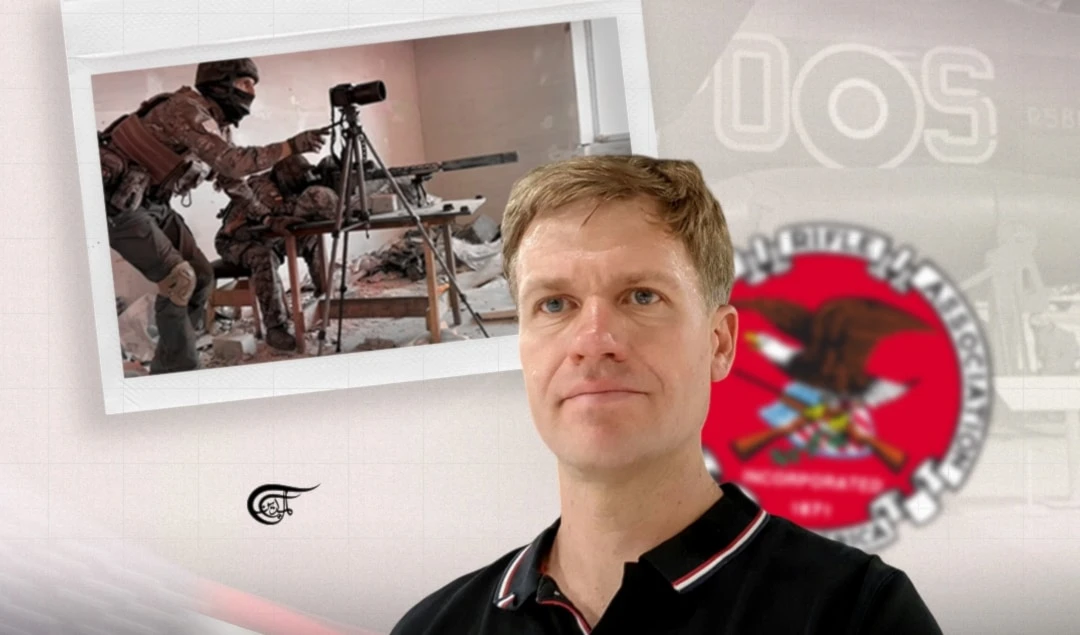Declassified: How US deceived Russia over NATO enlargement
Yeltsin kept schtum on the military bloc, and enlisted in the Partnership for Peace. Despite plans for NATO expansion already being well-laid by that point, and very much in motion, he remained silent about developments.
-

The Hungarian summit was a disaster. Clinton dubbed NATO "as the bedrock of security in Europe," and boldly declared "no country outside will be allowed to veto expansion," clearly referencing Russia.
On August 18th, the official Twitter account of NATO’s Allied Command Transformation published a slick animated video, seeking to “get [the] facts straight” on the “defensive alliance”, and dispel “false myths” about its nature and objectives, disseminated by Russia.
Among those “myths” is the notion NATO promised Russia it would not expand after the Cold War. Of course, there is ample documentary evidence indicating that in the two years leading up to the USSR’s December 1991 dissolution, Mikhail Gorbachev and other high-ranking Soviet officials were repeatedly told precisely that by their US opposite numbers. This is well-known to the point of being uncontroversial, begging the obvious question of why the alliance maintains otherwise in the present.
Less understood is how NATO enlargement into the former Warsaw Pact and Soviet Union was achieved, in the face of significant Russian hostility, during the 1990s. The sordid tale is nonetheless amply spelled out in a highly revealing tranche of documents released by the US National Security Archive. The files reveal how Russian President Boris Yeltsin was consistently manipulated by his US counterpart Bill Clinton on the question during the 1990s, while bold, false promises of a “strategic partnership” between the countries repeatedly came to nothing.
Take for instance the transcript of a cordial July 5th 1,994 telephone conversation between Clinton and Yeltsin. At the time, the US President was preparing to depart for soon-to-be NATO members Poland and the Baltics, before meeting with Yeltsin at the G7 summit in Italy.
Yeltsin urged Clinton to raise the plight of Russophones in Estonia and Latvia, as “a public statement…that the US will not support any infringement on the rights of the Russian-speaking people” would mean these countries “act differently.” He noted Lithuania’s quick granting of citizenship to its Russian minority had prompted Moscow to withdraw its troops from Vilnius. The same could happen by August in Tallinn and Riga if assurances were made. Yeltsin also wished to discuss NATO expansion.
Clinton swore he’d “raise the issue of the Russian minorities,” and reassured Yeltsin that while NATO might “eventually expand,” he’d set out “no timetable and no requirements.” Instead, he indicated that he’d “like us to concentrate” on Partnership for Peace, a US-led initiative seeking to “achieve a united Europe where people respect each other's borders and work together.” Yeltsin would’ve been entirely forgiven for thinking the Partnership was Washington’s primary focus, and NATO an afterthought, by the conclusion of the chat.
‘New Form of Encirclement’
The Russian president’s optimism about “a mutually beneficial partnership with the US on the basis of equality” is evident in a letter he sent to Clinton in November that year. Yeltsin spoke of this prospective coalition as “the central factor in world politics,” and pledged to cooperate constructively with the US on issues related to Bosnia, Iraq, North Korea, and Ukraine.” He “eagerly” awaited their meeting at that December’s Conference on Security and Cooperation in Budapest, where “we have much to talk about … first of all, transforming European stability.”
As it was, the Hungarian summit was a disaster. Clinton dubbed NATO as “the bedrock of security in Europe,” and boldly declared “no country outside will be allowed to veto expansion,” clearly referencing Russia. In response, Yeltsin used his own oratory to fulminate, “it is a dangerous delusion to suppose the destinies of continents and the world…can somehow be managed from one single capital.” He further warned, “[moving] the responsibilities of NATO up to Russia's borders” would be a grave error.
An internal US diplomatic memo from the day after shows lessons were promptly learned from this embarrassing episode. Namely, the urgent need to keep quiet publicly about US plans for extending the military alliance, while offering bogus private assurances to Moscow that any enlargement would only occur after consultation between the two countries, and Russia was still in the running for bloc membership.
Fast-forward to May 1995, and Clinton visited Moscow to celebrate the 50th anniversary of Allied victory in World War II. These conscious, deliberate lies were on full display during his one-on-one meeting with Yeltsin. Records of the event suggest the pair’s rapport was genuinely chummy, although serious matters were very much on the table too. The Russian president pleaded to his US counterpart:
“How do you think it looks to us if one bloc continues to exist while the Warsaw Pact has been abolished? It’s a new form of encirclement if the one surviving Cold War bloc expands. Many Russians have a sense of fear. What do you want to achieve with this if Russia is your partner? We need a new structure for Pan-European security, not old ones! Perhaps the solution is to postpone NATO expansion until the year 2000 so that later we can come up with some new ideas.”
Clinton somewhat amazingly suggested Moscow should view his approach to NATO “in the context of greater integration of Russia into other international institutions,” while dangling the prospect of various sweeteners, including membership of the G7, if Yeltsin quietened his anti-NATO rhetoric, and kept his opinions on the bloc’s expansion to himself. Clinton knew well that such compliance was easily bought. As his Russian “friend” acknowledged, his position heading into the 1996 Presidential election was “not exactly brilliant.”
‘A Tragic Mistake’
At that time, Yeltsin’s polling stood in the single digits, and his Communist rival Gennady Zyuganov was widely forecast to win via landslide. Yeltsin spoke of needing “positive reports” in the press, and to “head off even the smallest wrong move.” He proposed any discussion of NATO enlargement being kept theoretical until 2000, and urged the White House not to do anything to “rile the situation up before the elections.” Clinton duly pledged:
“I’ll do nothing to accelerate NATO [expansion]. I’m trying to give you now, in this conversation, the reassurance you need. But we need to be careful that neither of us appears to capitulate. For you, that means you’re not going to embrace expansion. For me, it means no talk about slowing the process down or putting it on hold or anything like that.”
So it was that Yeltsin kept schtum on the military bloc, and enlisted in the Partnership for Peace. Despite plans for NATO expansion already being well-laid by that point, and very much in motion, he remained silent about developments. The Russian President’s acquiescence was further assured by extensive covert and overt US assistance in his election campaign, which was fundamental to transforming an initial six percent standing in the polls to an extremely comfortable victory.
Less than three years later, NATO began engulfing the former Soviet sphere, incorporating the Czech Republic, Hungary, and Poland. This push was opposed Stateside by, among others, George Kennan – a committed ‘Cold Warrior’ and key figure in the alliance’s creation. In May 1998, following the US Senate ratifying NATO’s enlargement, he wrote:
“I think it is the beginning of a new Cold War…The Russians will gradually react quite adversely, and it will affect their policies. I think it is a tragic mistake. There was no reason for this whatsoever. No one was threatening anybody else…Of course, there is going to be a bad reaction from Russia, and then [the NATO expanders] will say that we always told you that is how the Russians are – but this is just wrong.”
Today, with Russia and Ukraine at war and the latter’s political and military future, if not outright existence as a state, in the balance, Kennan’s words give the disquieting appearance of an unheeded prophet’s warning come terribly true.

 Kit Klarenberg
Kit Klarenberg
 7 Min Read
7 Min Read












